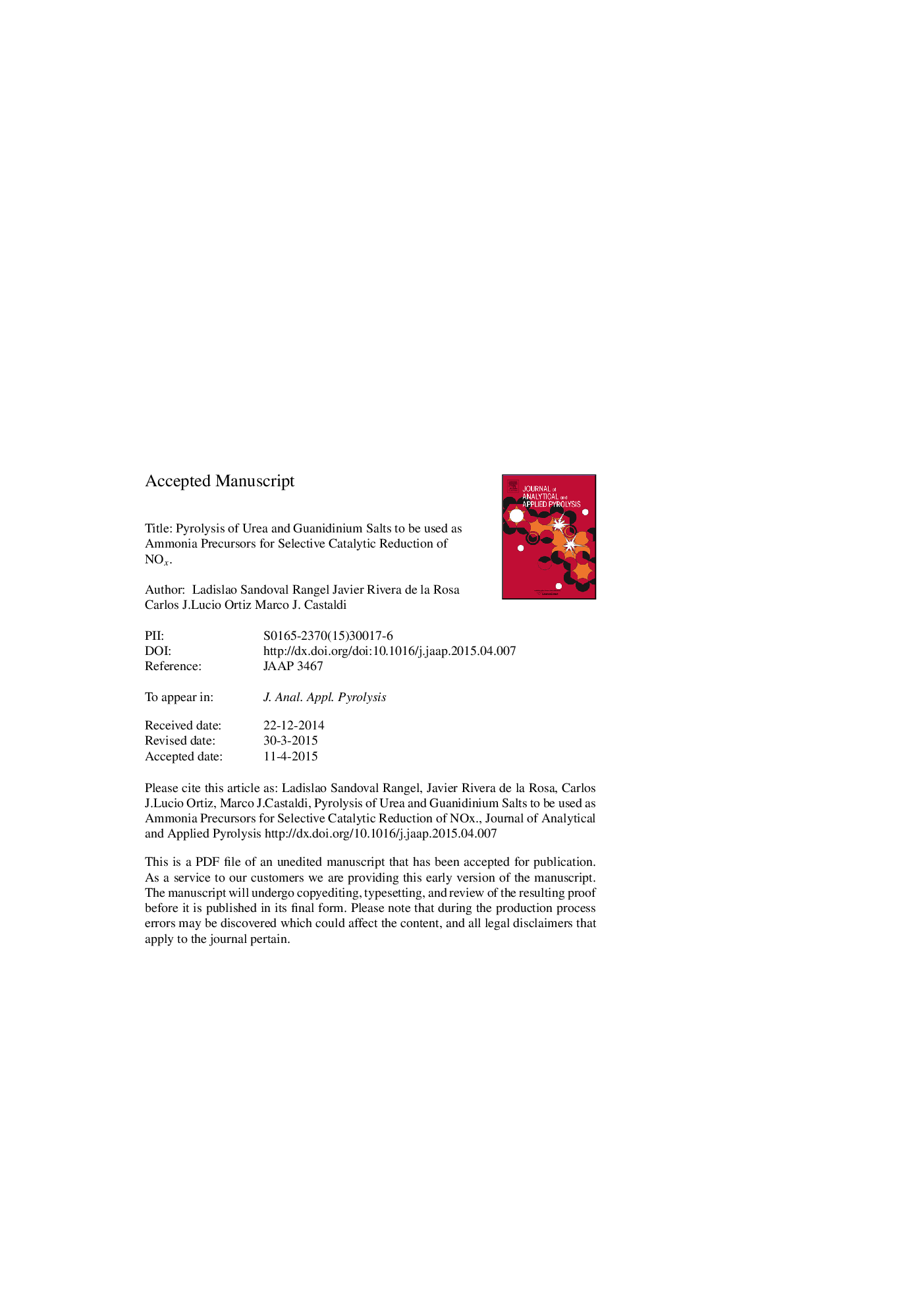| Article ID | Journal | Published Year | Pages | File Type |
|---|---|---|---|---|
| 7606830 | Journal of Analytical and Applied Pyrolysis | 2015 | 22 Pages |
Abstract
In this work, the thermal decomposition (pyrolysis) of urea, ammonium carbamate, and guanidinium acetate, carbonate and chloride was performed, using thermogravimetric and differential thermal analysis coupled to gas chromatography and mass spectrometry (TGA/DTA-GC/MS, from 25 to 500 °C). Solid products from pyrolysis were characterized with infrared spectroscopy (FT-IR) and X-ray diffraction (XRD). Triazines and heptazines were found as solid products of pyrolysis for the tested solids. Crystallite sizes were assessed using the Scherrer equation; it was found that guanidinium acetate and guanidinium chloride had the biggest crystallites of all solids analyzed (maximums of 113 and 109 nm for guanidinium acetate and guanidinium chloride, respectively) up to 350 °C. These compounds also showed the highest decomposition temperatures, with thermal decomposition starting at 246 °C for guanidinium acetate and 300 °C for guanidinium chloride. This results show the composition of the solid and gaseous products for guanidinium acetate, carbonate and chloride, along with identification of ammonia production of guanidinium salts, which offer an important comparative with the thermal decomposition of well-known ammonia precursor compounds like urea and ammonium carbamate.
Keywords
Related Topics
Physical Sciences and Engineering
Chemistry
Analytical Chemistry
Authors
Ladislao Sandoval Rangel, Javier Rivera de la Rosa, Carlos J. Lucio Ortiz, Marco J. Castaldi,
